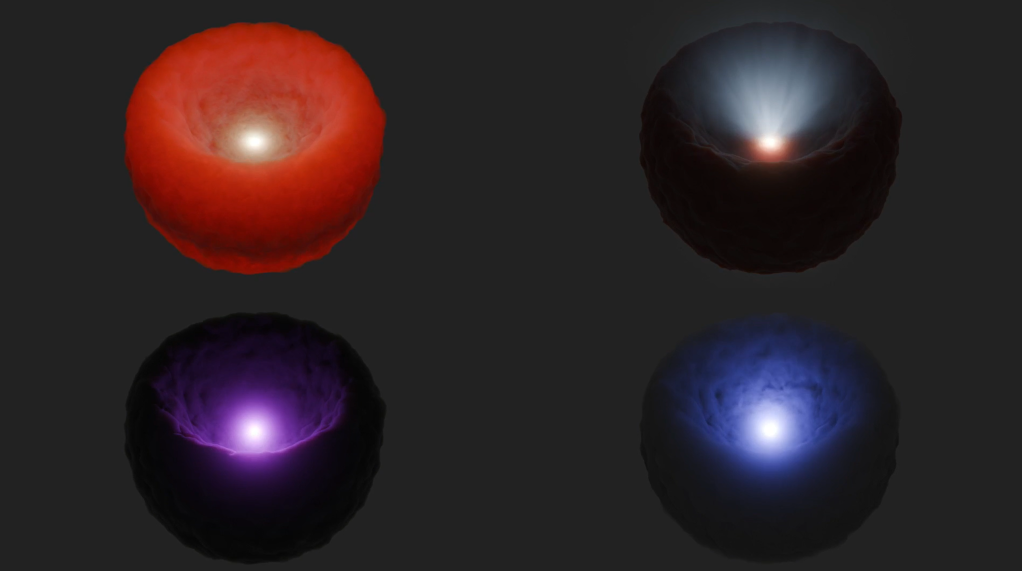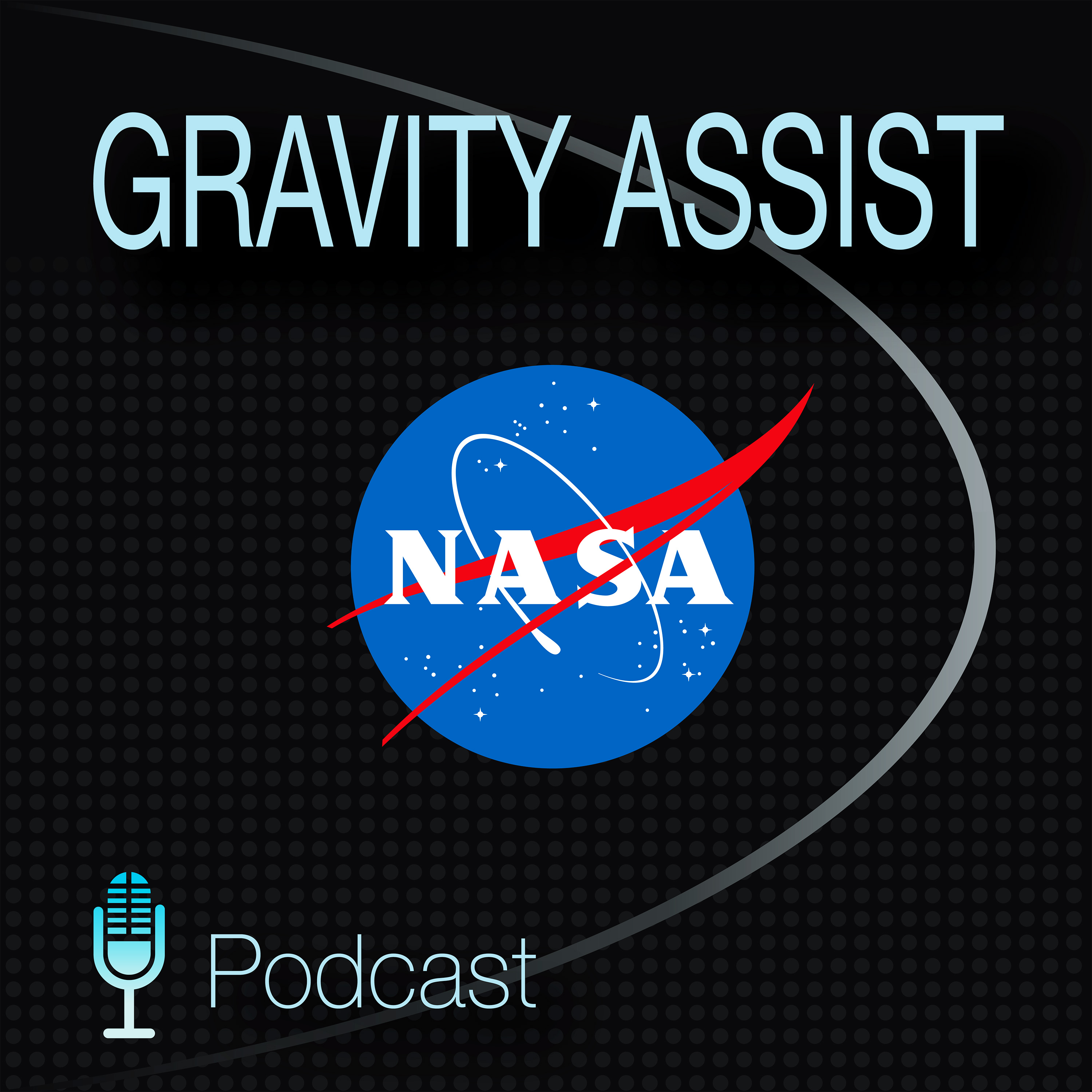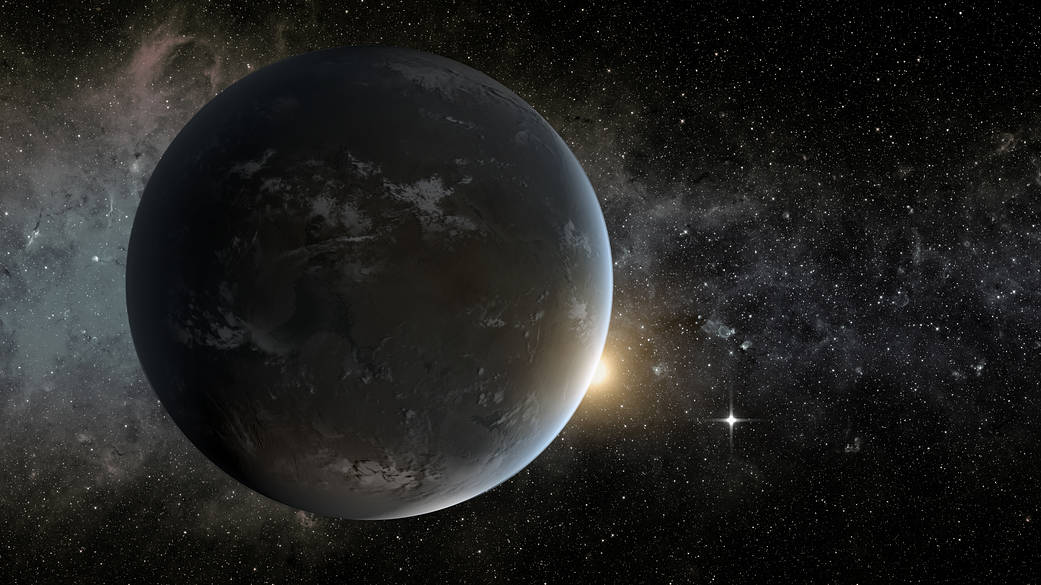
Without our Sun, there would be no life on Earth. The Sun gives us exactly the amount of heat we need to survive. But our Sun represents only one type of star in the universe. Smaller, fainter stars called K stars are more common in our galaxy and also have planets, but we know far less about them. Giada Arney, astrophysicist at NASA’s Goddard Space Flight Center, is looking at the potential for K stars to host habitable worlds. Learn about how stars affect planetary environments and why complex life on early Earth was impossible.
Jim Green:Well, life on Earth is the only life we know, and so that means that our star is so important to us, but there are other types of stars. What would life be like around different stars in those solar systems?
Giada Arney: Earth didn’t have an ozone layer before and didn’t use to have oxygen in its atmosphere, and these different kinds of alien Earths might be analogous to the kinds of alien exoplanets we might someday encounter.
Jim Green:Hi, I’m Jim Green, chief scientist at NASA, and this “Gravity Assist.” On this season of “Gravity Assist” we’re looking for life beyond Earth.
Jim Green: I’m here with Dr. Giada Arney and she is a research space scientist at NASA Goddard Space Flight Center. She has done research on astrobiology, exoplanets, organic hazes, Venus and planetary habitability. So today we’re going to talk about how NASA looks for life beyond earth. Welcome Giada.
Giada Arney: Thanks Jim, I’m glad to be here.
Jim Green:Well, we now know there are more planets than stars in our Milky Way, and these stars come in all sizes and intensities. And I know you have a favorite star type that you look at. What do you think is the best type of star that could possibly have habitable planets?
Giada Arney: A lot of the time when people think about habitability in planets, we think just about the planet by itself. But it’s really important to remember that planets orbit stars and planets and stars actually can interact with each other in really important ways that affect habitability. So I like to think about what I think of as Goldilocks stars. These are stars that I think might be just right to find life and habitable planets. These are called K stars or K dwarfs, to use astronomical jargon. So the Sun is G dwarf in astronomical jargon, you may have also heard of M dwarfs, or we also call those red dwarfs. Those are teeny, tiny stars. So K dwarfs are kind of in the middle between G dwarf Sun stars, and M dwarf tiny stars.
Jim Green: What’s the difference between our Sun, a G-Star; and a K star, other than size?
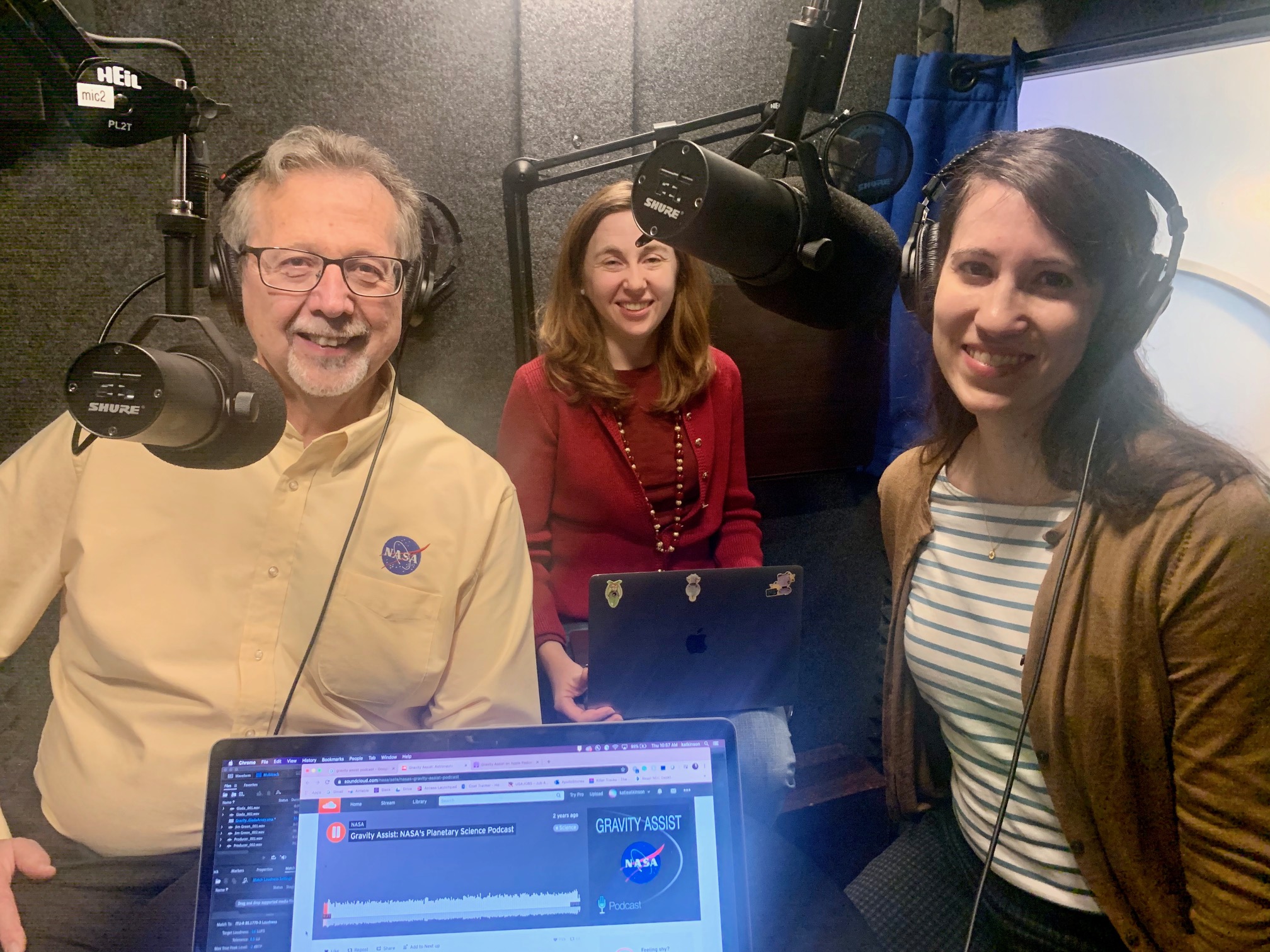
Giada Arney: There’s a historical convention where astronomers give stars these different designations with these different letters, they denote different things like their sizes and their luminosities. The scale for historical reasons goes O-B-A-F-G-K-M, from the biggest stars to the smallest stars. So K stars are smaller than the sun, they’re less luminous than the sun, but they’re bigger than the smallest kind of stars. They’re also, I think, interestingly more numerous than the sun. There’s more K dwarfs in our galaxy than there are sun-like stars.
Jim Green: Where do those classifications O and B and G and K come from?
Giada Arney: So back in the late 1800’s, early 1900’s at the Harvard Observatory, there were these women who are called computers and what their job was, to sift through these photographs of the sky and a lot of what they were doing was categorizing stars. And so one woman, Annie Jump Cannon, was the person who came up with the original stellar classification system.
Jim Green: Yeah. So her first class was A, and then she decided on B and C.
Giada Arney: Yeah, yeah. She gave them different letters, I think based on the strengths of different features that she was seeing in their spectra.
Jim Green: And then when she realized that it’s really about a temperature, she had to reorder them but she kept that original classification.
Giada Arney: Yes, which we now use today. So it seems like, you might think, “Oh, where did these letters come from?” They actually came from a place where people were actually doing science.
Jim Green: How does the host star affect whether or not a planet around it may be habitable?
Giada Arney: The host star can affect habitability in a lot of different ways. For example, the lowest mass kind of stars, these M dwarfs that I mentioned, they’re really active stars. They flare a lot, they produce a lot of high-energy radiation, constantly bombarding their poor little planets orbiting around them. And what makes it especially tough for the little planets is that because M dwarfs are so dim, you have to orbit really, really close to that campfire in order to stay warm. So you’re orbiting super close and yet you’re constantly getting bombarded by high-energy radiation, so that’s not so good. But what I like about K dwarfs is that they’re not nearly as active as M dwarfs.
Giada Arney: They’re much less active, they produce a lot less high energy radiation, which is really good for habitability. And what makes them better than G dwarfs, potentially for looking for habitable planets, is that G dwarfs like our Sun are brighter than K dwarfs. So when you’re looking for tiny little planets orbiting around them, it’s harder to pull out those signals when you’re looking around a really bright star, compared to when you’re looking around a dimmer star.
Jim Green: So you know those M stars, those smaller ones, like TRAPPIST-1 is an M star. It had seven planets and three or four of them were in the habitable zone. But as you said, they were being hammered by the radiation from the star, the coronal mass ejections and everything else that happens. But that habitable zone is so close to the star, they’re tidally locked just like our Moon is. So with K stars then, that habitable zone is further out.
Giada Arney: Right.
Jim Green: Do we expect those planets to be tidally locked?
Giada Arney: Not necessarily. The tricky thing about the habitable zone is we don’t know whether the planets that are in the habitable zone are truly habitable yet. We actually have to make those observations. But I think right now, based on what we know, is that there is a lot of problems to be orbiting around an M dwarf, just because of the way their stars behave.
Giada Arney: There’s a lot of things that M dwarfs do that can strip away habitability from a planet that K dwarfs do much less. But they still offer advantages for detectability because they’re smaller than our Sun, so it’s easier to see tiny planets orbiting around them.
Jim Green: So in your search for that K star with planets, how many are you looking at these days?
Giada Arney: Well, so I’m not actually an observer, I’m a modeler. So what I do is, I model systems in my computer and I try to understand what are the best kinds of stars for looking for planets with habitability in life. What we really need in order to actually observe planets around K dwarfs, is next-generation telescopes that we don’t currently have, but hopefully will in the future.
Jim Green: So, when you do your modeling, what are you modeling exactly in these K stars? Different types of planets, different sizes, in and out of the habitable zone and the activity of the star itself?
Giada Arney: Yes. What I am mostly interested in modeling is, I’m trying to understand how the star impacts the planet’s atmosphere. So I run what’s called a photochemical climate model, where it helps me to understand how the atmosphere evolves in response to the star.
Jim Green: What do you mean by photochemistry?
Giada Arney: Well, ok, that’s a good question. Chemistry, right, is the interaction between different chemicals, different compounds. Photochemistry, so “photo” means light in this context. So this is chemistry that involves not just different chemical compounds but also light getting involved. So light can break apart different molecules and make new molecules. Light can split them apart, make these new molecules and those new molecules can react in different ways. And this is a really fundamental process that occurs in planetary atmospheres.
Giada Arney:So I can put a planet, make up an atmosphere on top of that planet, put it around a given star at whatever distance I want, make the planet whatever size I want, make the atmosphere whatever density I want, put that planet there and just see how it evolves in response to the star. One of the really interesting things I found that I was really excited about, is that bio signatures, these are remotely detectable signs of life, around K stars compared to G stars, it might be easier to detect them. At least a particular kind of bio signature, which is oxygen and methane together in the atmosphere is a really good sign of life.
Giada Arney: So when you see these two gases, oxygen and methane, in the planet’s atmosphere together, that’s really important because those gases are both produced by life and they destroy each other really rapidly.
Giada Arney: And the best way we can explain that is, life. That’s how we have oxygen and methane in Earth’s atmosphere. But because of the different amount of ultraviolet light the K dwarfs produce, you can end up getting a lot more methane in their atmospheres, even in the presence of oxygen. And that’s really important because when you want to try to look for life elsewhere, you would love to try to detect these two gases together. And it might be quite hard to actually do that for a planet around a G dwarf, but much easier to do that for a planet around K dwarf.
Jim Green: So are we developing instruments that will enable us actually to look at a planet and its atmosphere?
Giada Arney: Yeah, we’re developing those right now. One telescope that’s going to fly soon is the James Webb Space Telescope. And that’s going to make the first look at potentially habitable exoplanets. It will probably not be able to observe habitable planets or potentially habitable planets around K dwarfs. What it might be able to do is, it might be able to look for planets around M dwarfs. These are these much smaller stars. So when you have a much smaller star, it’s much easier to observe the planet around it. To observe planets around brighter stars like K dwarfs so even G dwarfs, we’re going to need even next generation telescopes beyond James Webb.
Jim Green:What kind of telescopes would we need next?
Giada Arney: Great question. James Webb for most of its exoplanet observations and for observations of planets like the TRAPPIST-1 planets, it’s observing them with what’s called the “transit technique,” where the planets pass directly in front of the star. From our point of view, it’s kind of like a little tiny eclipse where we see these little dots passing in front of their stars. And so from those little tiny eclipses we can infer things about the planet, and also a little bit of the star, like it’s blocked by the planet’s atmosphere. And so we can learn things about what the planet’s atmosphere is made of. And that’s a really great technique for planets that orbit small stars and planets that have really small orbits, they transit frequently. And so that’s typically the best kind of technique you’d use for planets or being low-mass stars like M dwarfs, where you’re orbiting close to your star really quickly. So you get lots and lots and lots of transits.
Giada Arney: The size of the star is not too big compared to the size of the planet compared to bigger, brighter stars. To observe planets orbiting brighter stars like G dwarfs and K dwarfs, G dwarfs like our Sun and K dwarfs, you probably need to see the planets directly because it can be tricky to use the transit technique in that case. It’s really hard to get enough signal to noise using the transit technique because the star’s just so much bigger compared to the planet and because the star is brighter, it has to orbit farther away from the star in order to be in the habitable zone. And so your transits are much less frequent. Earth would only transit the Sun once a year if you were an alien observer, compared to an M dwarf where you can get transits every couple of days.
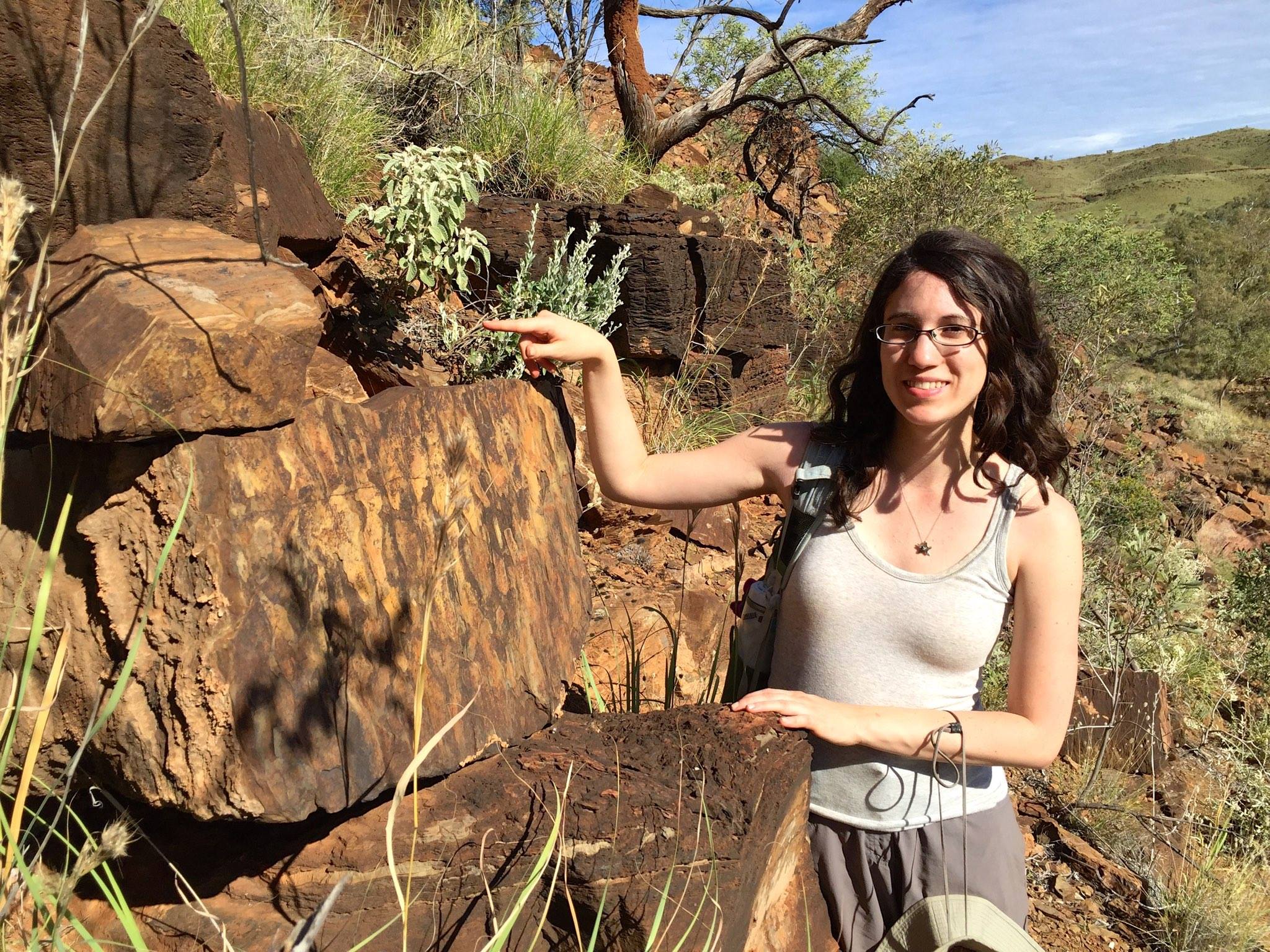
Giada Arney: So around those M dwarfs you get a lot more signal in the same amount of time. We want to be able to see the planets directly for these brighter stars. We need ways to block out the starlight and there’s different technologies that we’re developing right now in order to do that. One’s called the starshade where you actually fly. It’s this beautiful petal-shaped thing that fits in space and flies in front of the telescope. And you can position it between the telescope and the star and you can block out the starlight and see the planets orbiting. There’s another thing called a coronagraph, which is like a starshade, but it sits inside the telescope. And both of these do things, something similar to like, if you’re try to see an airplane that’s flying right next to the Sun and you use your hand to block out the Sun so you can see the airplane — that’s what these technologies do. They’re blocking out the really bright star to see the tiny planet that’s nearby.
Jim Green: So when we do that, we block out the light and we look at the planet and the planet is illuminated. That means the light from the star reflects off the atmosphere and the atmosphere modifies that light and then we observe it.
Giada Arney: Right. What we’re looking at, is direct reflected light with these kinds of next generation missions that would actually be able to block out the starlight. And again, it’s really important to think about how stars modify their planetary atmospheres, because we don’t just passively get warmed by the Sun. The Sun is actually modifying our atmosphere through these photochemical effects. And it’s really important whenever we try to think about the kinds of biosignatures that we might see on exoplanets, to consider these photochemical effects, because we might get fooled if we don’t think about that.
Jim Green: So this sounds complicated, where the star’s light affects the photochemistry of the planet and the life on that planet is also affecting the photochemistry. And you have to tease that out.
Giada Arney: You have to think about all of these different things together, interacting with each other, and especially when you bring life into the equation, that makes it especially complicated. Life on Earth has modified our environment in really complicated ways. We think about something that’s really important to habitability: The ozone layer, which on Earth blocks UV radiation from reaching the surface, so it’s worse than getting a sunburn. If we didn’t have an ozone and oxygen layer in our atmosphere, we would die from radiation poisoning really, really fast.
Jim Green: Well, you know, when you think about that, an element of that is, well that’s our environment and we’ve evolved in that environment, but you know, maybe there’s life that lives in a planet where the ozone is destroyed and the ultraviolet light comes in and they take that into account. Is that a possibility?
Giada Arney: Sure. Well, actually, there was life on Earth before the ozone layer existed. The ozone layer is on Earth because of life. Because eventually oxygenic photosynthesis evolved on our planet and it put oxygen in the atmosphere and that oxygen, because of photochemistry, this interaction between gases in our atmosphere and the starlight, that photochemistry transformed some of that oxygen in our atmosphere into ozone. And so these processes on other kinds of planets might play out in different ways. In some of my own simulations, I find that K dwarfs actually produce less ozone than a planet around a G-star, which might have implications for how much UV light reaches the surface on those stars. There’s definitely tons of different scenarios that might be able to play out on different kinds of planets.
Jim Green: What are we doing here on Earth to help better predict where life might be found on other planets in our solar system?
Giada Arney: I use computer models to do this because I think it’s really fun to let the universe be my sandbox where I can tune all these different knobs in my models and see what happens. So that’s primarily what I do. We often forget that Earth itself is a planet, but Earth is a planet. And I think a lot about how we can think about Earth as an exoplanet to help us understand what we might look for and what we might see when we actually start looking for these pale blue, and other colored, dots around other stars.
Giada Arney: I also think a lot about different phases of Earth’s history because when you think about Earth in the past, Earth is more than one planet and its environmental conditions were dramatically different in the past. I mentioned before that Earth didn’t have an ozone layer before and didn’t use to have oxygen in its atmosphere, and these different kinds of alien Earths might be analogous to the kinds of alien exoplanets we might someday encounter. So using modeling and using what we know from here I think is really useful.
Jim Green: So if Earth started out being so uninhabitable, and life was struggling to get through, how does that process work?
Giada Arney: Well, it would not have been habitable to us or a lot of the complex life that we have on Earth today, but it was habitable to the organisms that existed on early Earth. And that did arise in that context. What we consider habitable today, like oxygen is not a prerequisite for habitability. It is for us. We humans, we need oxygen to survive. But there’s, even life that lives on Earth today that hates oxygen. And if you put them in an oxygenated environment, they would die. So on early Earth, there was no oxygen and that was okay. Life didn’t want oxygen. In fact, when oxygen started to rise in our atmosphere, it poisoned a lot of life, we think. There was a huge calamity that may have occurred when oxygen levels first started to rise, because oxygen is really reactive and it’s poisonous if you haven’t evolved to deal with the reactivity of it.
Giada Arney: So the interactions between life and its environment, they’re really complicated and there’s really no, not necessarily any one size fits all, answer for what is a habitable environment. There’s different habitable environments even on Earth for different kinds of life, and that’s great because that broadens the kinds of environments we can look for on other kinds of planets when thinking about habitability.
Jim Green: So within our solar system, you’ve studied several planets, Venus in particular. What do you like about Venus and how do you look at that relative to other exoplanets?
Giada Arney: Well, what’s great about Venus, is that it’s so hard to understand what’s under the clouds, just like it’s so hard to understand what the exoplanet atmospheres are made out of at all right now. What I think is really compelling about Venus in particular is that I think Venus has a lot to tell us about how habitability can vary and evolve over time. Venus today is a really uninhabitable world. It’s a planet where the surface temperature is hot enough to melt lead. And you might think, well, what does that planet have anything to tell us about habitability other than the fact that it doesn’t have habitability, but there’s evidence of Venus might’ve been habitable in the past.
Giada Arney: People think that it may have lost an ocean of liquid water that used to be on the surface and that was in response to the star. The Sun through normal stellar evolution processes, gets brighter over time and eventually got too hot on Venus for its oceans to be sustained. So again, this is an example of how stars and planets can interact to shape habitability. And Venus is a great example of the end-state of habitability. Earth might in the future look a lot more like Venus than it does the planet that we know and love today because the Sun is not stopping getting brighter over time. And this is a process that takes a really long time. It takes billions of years. But these are the kinds of time scales that we have to think about when we think about astronomy.
Jim Green: Yeah. So when we look like Venus, we better be on Mars.
Giada Arney: Yeah. Mars is going to be pretty nice then hopefully.
Jim Green: Do you think we’re alone in the galaxy?
Giada Arney: Well, I think that life evolved on Earth as early as it could. When you look at Earth history, the geological record, life appeared almost as soon as Earth became habitable, at least as far as we can tell. And what that tells me is that, maybe it’s not too hard for life to evolve if you have the right conditions and the right ingredients and the right kind of planet. So if habitable planets are common and I don’t know how common they are, but I think there’s probably some out there, then I think maybe at least some of those planets have life. So I would be surprised if we’re alone in the galaxy.
Jim Green: Let me ask you this question then. Do you think we’ll find evidence for life in the solar system beyond Earth first, or from an exoplanet?
Giada Arney: I love that question because it’s such a cool way of thinking about planets holistically. A lot of the time we think about like exoplanets or solar system planets as separate planets, but I think it’s exciting to think about them together as one population of planets. And I don’t know, I’m really excited though about future solar system exploration of Europa. I know that the Europa Clipper is going to be visiting Europa and we’re going to begin to understand what might exist under Europa’s icy crust and in the ocean underneath, which might be habitable and might have life.
Giada Arney: And that’s really exciting, and in the same timeframe we’re going to begin to get the first observations of maybe potentially habitable exoplanets, and maybe if we’re really lucky, discover biosignatures in their atmosphere. I think if we discovered life within or outside the solar system, in either case, if we make one positive discovery, that’s going to tell us life is probably really common and our galaxy is teaming with inhabited worlds.
Jim Green: Well Giada, I always like to ask my guests to tell me, what was the event or person, place, or thing that got them so excited, that propelled them to become the scientist they are today. I call that a gravity assist. So what was your gravity assist?
Giada Arney: I used to really love going to the library as a kid and checking out books on science and especially the astronomy books. Those were my favorite of all time. And I think I checked out every single astronomy book from the library that was near my house when I was a little kid. But there was one book that I loved the most because on that book, it’s called the Space Atlas. And there was this page in the Space Atlas, where the top of the page said, “Are we alone?” And it had this discussion of what I would now consider to be astrobiology. But at the time I didn’t have that word for it and it had this picture of the Voyager Golden Record that was going out into the stars. And I just thought it was so amazing that we’re sending this record out into the stars. Probably no aliens will ever find it, but just the idea that it could be found, was so amazing to me.
Jim Green: That’s fantastic. Well, I really enjoyed talking to you about star, star types and how planets might actually be habitable or on other different types of stars. Thanks much.
Giada Arney: Thanks Jim. It’s been great chatting.
Jim Green: Join me next time as we continue our journey to look for life beyond earth. I’m Jim Green and this is your Gravity Assist.
Credits:
Lead producer: Elizabeth Landau
Audio engineer: Manny Cooper
Goddard audio support: Katie Atkinson














